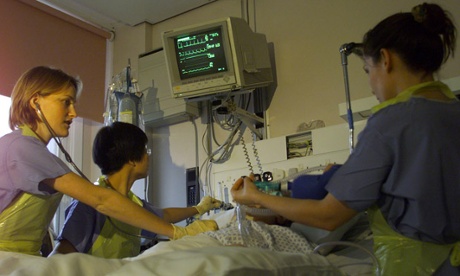Moving ICU patients out of hours is linked to greater chance of death but rate of such discharges remains unchanged

There has been no improvement in tackling the number of patients being discharged from intensive care units (ICUs) overnight, despite research indicating they are at a higher risk of dying, a study has shown.
Previous studies have shown that patients moved from ICUs outside normal working hours have a higher likelihood of dying than those discharged during the day.
Despite efforts to lower the number of overnight discharges, one in seven – or 20,000 ICU patients – are moved to general wards after-hours every year, research by Monash University showed.
This rate has remained unchanged for the past eight years, it said.
“We don’t know exactly why things haven’t changed,” said lead researcher Dashiell Gantner of the university’s faculty of medicine, nursing and health science.
“Resources are one piece of the puzzle; it would be ideal if going into the night we had an extra bed to admit the unexpected patient without having to discharge another.”
Gantner said the responsibility for having a bed available was shared by clinicians managing the ICU, by hospital administrators co-ordinating ward beds, and by policy-makers directing the resources.
Previous studies have suggested a link between timing of ICU discharge and hospital outcomes.
Gantner said there were several possible explanations for this. “One is that patients discharged after-hours may be more sick than patients discharged in-hours. Our study showed that this may account for some of this increased risk, but not all of it.
“The second is that the degree of nursing and medical monitoring available in ICU cannot be provided in normal hospital wards overnight, so if a patient becomes unstable after ICU discharge this may not be picked up until it’s too late.
Gantner, who is also an intensive care fellow at the Alfred hospital in Melbourne, said a third possible explanation was that patients who were expected to die despite ICU-level care may be discharged after-hours to receive palliative care on the ward.
Further research was needed to explore these possibilities, he said.
The study, published in Intensive Care Medicine, was done in collaboration with the Australian and New Zealand Intensive Care Society and involved data from 700,000 patient admissions, between 2005 and 2012.
